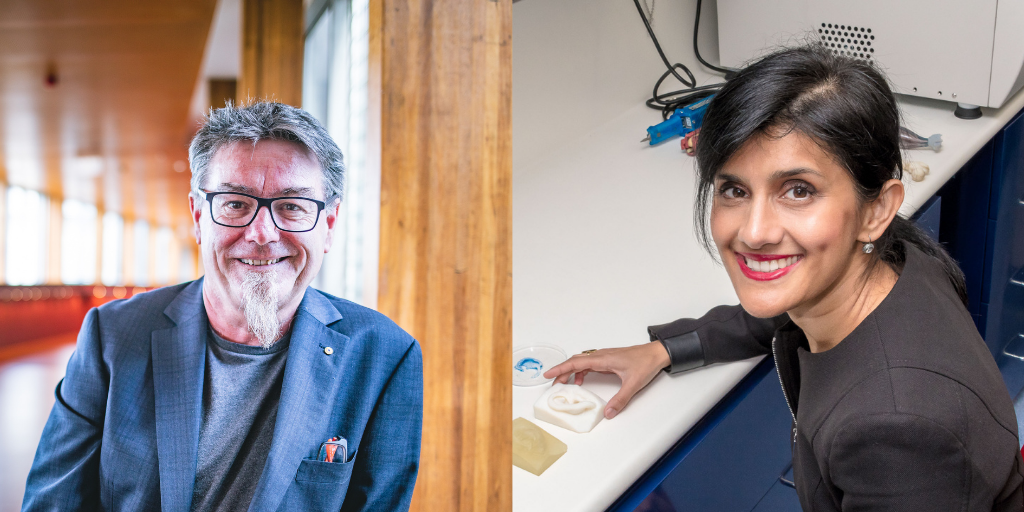News
3D printing bone tissue
Jun 28 2022
ACES researchers at the University of Wollongong (UOW) have progressed their clinical project with collaborators at the Royal Prince Alfred Hospital and University of Sydney, reporting on the translation of bioprinting in cartilage for a new publication in The Journal of Craniofacial Surgery.

Prof Gordon Wallace (left) and A/Prof Payal Mukherjee (right)
This new research builds on previous work to use a bioprinter to help treat microtia between ACES Director Prof Gordon Wallace and Ear, Nose and Throat (ENT) Surgeon A/Prof Payal Mukherjee from the Royal Prince Alfred Hospital.
Moving to animal trials, the 3D bioprinter ear study successfully overcame a difficult translational challenge showing that the novel biomaterials used were tolerated by the immune system, leading to further experiments to progress cartilage regeneration.
To find out more about the new research and paper, we caught up with A/Prof Mukherjee.
Could you explain what the new paper and collaboration involves?
This paper reports the translation of our bioprinting in cartilage work along the translational pipeline. When a study finally makes it to animal trials it means it has made it out of very controlled benchtop experiments and tested in a real living environment.
In this experiment, we tested the hybrid scaffolds we have developed in our bioprinted ear project in a living environment over six months, showing that these novel biomaterials are handled very well in the body’s immune system.
Of course, we needed an animal model that most closely resembles the human immune system. By pulling together resources at both UOW and the University of Sydney, we were able to successfully overcome a difficult translational challenge.
In doing so, we conducted some experiments on novel scaffolds on the bench at UOW and then took that knowledge to do the first sheep study reported in microtia literature, using resources at University of Sydney, to show that these novel scaffolds are well tolerated in the body.
How did this new research come about?
It has come about from four years of prior benchtop research and collaboration, and has set the direction for future experiments that we need to do to keep advancing this project along the translational pipeline.
What are the future implications for this work?
Using the knowledge in this study, we are now planning further animal studies which will involve the introduction of more complex cells to these scaffolds and study the short and long-term impact on successful cartilage regeneration inside a living environment.
Read more about the work here.
You can also hear A/Prof Mukherjee on The ACES Podcast here.













